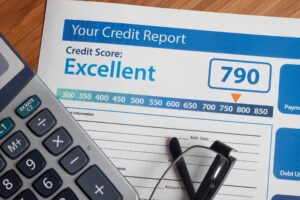**Title: Understanding Wraparound Mortgages: A Comprehensive Guide for Buyers and Sellers**
**Introduction**
When a buyer struggles to qualify for a traditional mortgage loan, it can create challenges for both the buyer and the seller. However, a wraparound mortgage might offer a viable solution for both parties to close the deal. This financing option can provide the buyer with the necessary funds to purchase a home and potentially generate a profit for the seller. Nevertheless, wraparound mortgages come with inherent risks, so it’s crucial to understand the details before proceeding.
**What Is a Wraparound Mortgage?**
A wraparound mortgage is a type of home loan where the seller retains their existing mortgage while the buyer’s mortgage “wraps” around the remaining balance. Instead of making payments to a bank or lender, the buyer pays the seller directly. The seller then uses a portion of these payments to continue paying off their original mortgage. Typically, wraparound mortgages have higher interest rates than conventional loans, allowing sellers to profit from the interest rate difference.
**How Does a Wraparound Mortgage Work?**
In a standard real estate transaction, a buyer secures a mortgage from a lender, and the seller uses the sale proceeds to pay off their existing mortgage. With a wraparound mortgage, the seller keeps their existing mortgage and offers seller financing to the buyer. The buyer and seller agree on a down payment and loan amount, then sign a promissory note outlining the mortgage terms. After finalizing the transaction, the seller transfers the title and deed to the buyer but continues making payments on the original mortgage.
For a wraparound mortgage to be feasible, the seller’s mortgage must be assumable. If not, the seller’s lender may view the wraparound agreement as a violation of the original loan terms. The wraparound mortgage takes a junior lien position, while the seller’s mortgage remains in the first lien position. In case of foreclosure, the seller’s lender gets repaid first, and the seller receives any remaining funds.
**Wraparound Mortgage Example**
Consider this example: Sam is selling a home for $160,000 and has an existing mortgage balance of $40,000 at a 4% fixed interest rate. Sam decides to finance a loan for Alex (the buyer) to purchase the home. They agree on a $10,000 down payment and a $150,000 wraparound mortgage at a 6% fixed interest rate. Alex pays Sam monthly, and Sam uses these funds to continue paying off the original mortgage, pocketing the difference between the two payments. Sam profits from the 2% interest rate difference.
**Pros and Cons of Wraparound Mortgages**
While wraparound mortgages can benefit both buyers and sellers, there are risks to consider. Consulting with an experienced real estate attorney can help mitigate these risks.
**Benefits for Buyers:**
– **Easier Qualification:** Wraparound loans often have more flexible requirements, making it easier for buyers to qualify.
– **Lower Closing Costs:** Buyers may avoid some fees typically charged by traditional lenders.
**Benefits for Sellers:**
– **Profit Potential:** Sellers can profit from the interest rate difference between their existing mortgage and the buyer’s new rate.
– **Larger Pool of Buyers:** Seller financing can attract more potential buyers.
**Risks for Buyers:**
– **Higher Interest Rates:** Wraparound mortgages usually have higher interest rates than traditional loans.
– **Foreclosure Risk:** If the seller defaults on their original mortgage, the property could be foreclosed, even if the buyer makes timely payments.
**Risks for Sellers:**
– **Lender Approval:** If the original mortgage isn’t assumable, the lender may require full repayment upon the sale or ownership change.
– **Lender Responsibilities:** Sellers must ensure they collect payments from buyers to continue paying the original mortgage.
– **Foreclosure Risk:** If the buyer stops making payments, the seller must cover the original mortgage or risk default.
**Alternatives to Wraparound Financing**
If you’re a buyer struggling to qualify for a conventional loan, consider these alternatives:
– **FHA Loans:** Federal Housing Administration loans are ideal for buyers with lower credit scores or limited funds for closing costs. They have lower down payment and credit score requirements.
– **VA Loans:** Available to qualified active-duty service members, veterans, and surviving spouses, VA loans typically don’t require a down payment and offer competitive interest rates without private mortgage insurance (PMI).
– **USDA Loans:** U.S. Department of Agriculture loans are available in qualifying rural areas, often with no down payment and low interest rates. Note that O1ne Mortgage Inc. does not offer USDA loans at this time.
**Conclusion: Wraparound Mortgages Come with Risks**
In a wraparound mortgage, the buyer secures their mortgage from the seller, who wraps it around their existing loan. While this creative financing approach can help buyers who can’t qualify for traditional mortgages and sellers looking to attract more buyers, it involves several risks. To mitigate these risks, both parties should work with an experienced real estate attorney.
Looking for a more traditional mortgage option? Start a mortgage application today with O1ne Mortgage Inc. and begin your home buying journey. Visit [O1ne Mortgage Inc.](https://o1nemortgage.com) or call us at 888-372-8820 to speak with a mortgage expert, request a quote, or apply for a loan.
**Keywords:** wraparound mortgage, seller financing, assumable mortgage, real estate transaction, mortgage loan, home buying, O1ne Mortgage Inc., mortgage application, FHA loans, VA loans, USDA loans, mortgage risks, mortgage benefits.
Title & Legal Processes
1. Breaking a lease 2. Buying a house 3. Lease termination 4. Home buying clause 5. Rental agreement







